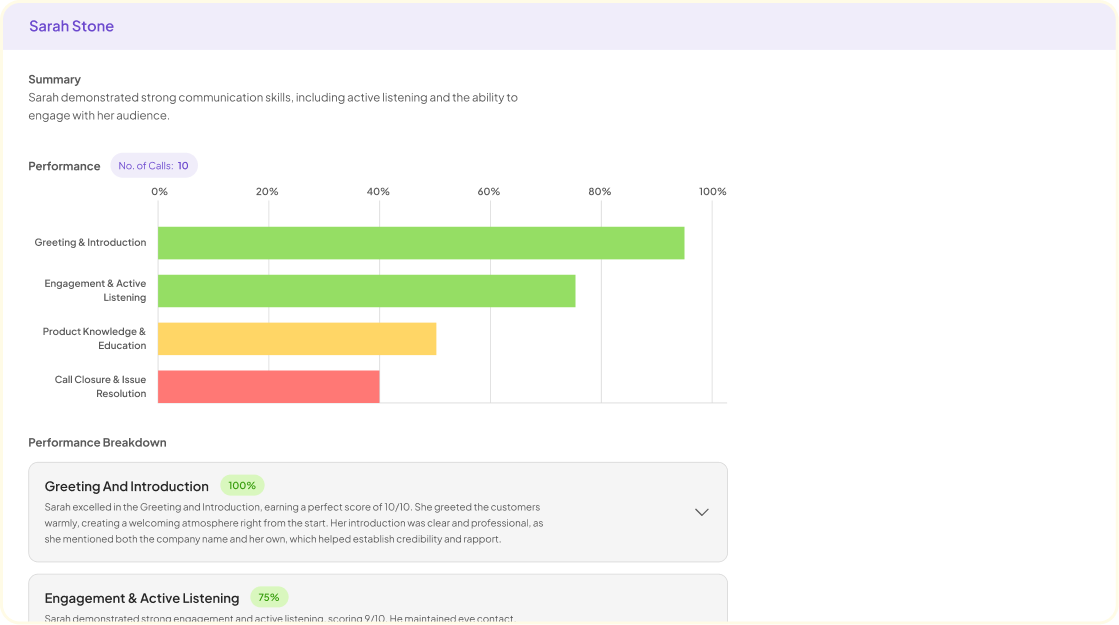Emotion Detection AI plays a vital role in understanding human feelings and opinions. As businesses increasingly rely on data to drive decisions, sentiment analysis offers invaluable insights into customer perceptions. By evaluating text and spoken language, these models can discern positive, negative, or neutral emotions, providing a nuanced view of audience sentiment.
This technology analyzes language patterns, keywords, and context to unravel the emotions behind consumer interactions. Understanding these sentiments can significantly improve customer engagement, enabling organizations to tailor their strategies effectively. As we delve deeper into how sentiment analysis AI models operate, we uncover the transformative potential of accurate emotion detection for businesses seeking to enhance their understanding of customers.
Understanding Sentiment Analysis AI Models
Emotion Detection AI plays a pivotal role in understanding how people express their feelings through words. These models utilize advanced algorithms to analyze text data and identify sentiments, such as happiness, sadness, anger, or surprise. By processing language patterns and contextual cues, Emotion Detection AI can discern the underlying emotions in customer reviews, social media posts, and more. This capability allows businesses to gauge public perception and improve their engagement strategies.
The efficiency of these AI models stems from their ability to learn from vast datasets. They apply various methodologies, including natural language processing and machine learning, to enhance accuracy. By constantly refining their training data, Emotion Detection AI evolves, ensuring that it remains effective in delivering real-time insights. Understanding these dynamics not only highlights the importance of sentiment analysis but also helps organizations develop data-driven approaches to cater to their audience's emotional needs.
The Basics of Sentiment Analysis Technology
Sentiment analysis technology is designed to comprehend human emotions expressed through text. It employs various algorithms and models to interpret opinions, attitudes, and feelings in written communication. By using Emotion Detection AI, businesses can gain insights into customer perceptions, allowing them to tailor their approaches effectively.
Understanding the basic components of sentiment analysis involves three key stages: data collection, processing, and interpretation. Initially, data collection involves gathering text from sources like reviews, social media, and customer feedback. Next, the processing phase includes cleansing and preparing the data for analysis. Finally, interpretation focuses on classifying the emotions detected, such as joy, anger, or sadness. This analytical process empowers organizations to make informed decisions by responding to customer sentiments promptly, thus enhancing their overall engagement strategy.
Key Components of Emotion Detection AI
Emotion Detection AI relies on several critical components to operate effectively and accurately. First, data collection is essential, often sourced from various mediums like social media, customer reviews, and surveys. This information is processed to discern sentiment and emotional tone, forming the foundation of the analysis.
Next, Natural Language Processing (NLP) is employed to interpret and analyze the collected text. This technology helps identify keywords and phrases that convey emotional context. Additionally, machine learning algorithms are utilized to enhance the model's accuracy, allowing it to learn from past data and improve future predictions.
Another vital component is the emotion classification system, which categorizes emotions like joy, anger, and sadness. This helps in creating a nuanced understanding of sentiment. Finally, real-time analytics enable organizations to monitor and respond to emotional trends, making Emotion Detection AI an invaluable tool for gaining insights into consumer behavior and sentiment.
How Sentiment and Emotion Detection AI Works
Emotion Detection AI utilizes advanced algorithms to interpret and analyze human emotions through text and speech. It begins by processing large datasets that contain various emotional expressions. These datasets help the AI learn how different phrases and tones are associated with specific emotions. For example, the distinction between “hope you have a great day” and “hope you have a great day” accompanied by sarcasm can be crucial in understanding intent.
The technology behind Emotion Detection AI relies on both natural language processing and machine learning. These systems evaluate sentiment through contextual clues, such as tone, word choice, and even punctuation. The AI continually learns from feedback, enhancing its accuracy over time. Ultimately, Emotion Detection AI aims to improve user interaction by creating more responsive and intuitive systems that resonate emotionally with individuals. This can significantly enhance customer service experiences, making interactions feel more personal and meaningful.
Data Preprocessing and Feature Extraction
Data preprocessing is a crucial step in sentiment analysis, especially when it comes to emotion detection AI. It involves cleaning and preparing raw data, such as text from social media or customer feedback, to ensure accuracy and relevance in analysis. Initial steps often include removing noise, such as irrelevant characters or words, and normalizing the text by lowering case and correcting misspellings. This process enhances the quality of data, making it suitable for further analysis.
💬 Ask About This Article
Have questions? Get instant answers about this article.
Feature extraction follows data preprocessing, where meaningful characteristics are identified and extracted from the cleaned dataset. Techniques like term frequency-inverse document frequency (TF-IDF) or word embeddings transform text into numerical vectors. This allows the emotion detection AI model to interpret and classify sentiments effectively. Ultimately, proper preprocessing and feature extraction lay the foundation for building a robust sentiment analysis model, enabling accurate insights and better understanding of user emotions.
Algorithms Behind Emotion Detection AI Models
Understanding the algorithms behind Emotion Detection AI models is crucial for grasping how they function. These models typically rely on natural language processing (NLP) techniques, which analyze text data to identify emotional tones. By utilizing machine learning algorithms, they can learn from vast datasets, improving their accuracy over time. This training often involves supervised learning, where models are exposed to labeled data that corresponds to various emotional states.
Key algorithms commonly employed include support vector machines (SVM), neural networks, and decision trees. SVMs are effective for classification tasks, separating emotions based on features derived from the text. Neural networks, particularly recurrent neural networks (RNNs), excel at understanding context and sentiment in sequences of words. Lastly, decision trees provide straightforward interpretability, allowing users to see how each decision impacts emotion classification. These algorithms collectively enhance the performance and reliability of Emotion Detection AI, making it a powerful tool for analyzing sentiment in various applications.
Applications of Sentiment and Emotion Detection AI
Emotion Detection AI plays a significant role in various sectors, enhancing user experiences and offering valuable insights. In customer service, for example, this technology can analyze chat interactions, identifying positive or negative emotions to guide responses accordingly. This capability allows businesses to tailor their communication strategies, providing more empathetic support to customers.
Moreover, social media platforms benefit greatly from Emotion Detection AI. By examining user-generated content, these platforms can gauge public sentiment around particular topics or brands. This analysis aids in shaping marketing strategies and improving brand reputation. In healthcare, Emotion Detection AI can assist therapists by analyzing patient interactions, leading to more effective treatments. As applications continue to expand, the potential for Emotion Detection AI to transform industries and foster more meaningful connections remains boundless.
Emotion Detection AI in Business and Marketing
Emotion Detection AI plays a pivotal role in transforming business and marketing strategies today. By analyzing customer sentiments and emotions, businesses can tailor their products and services to meet audience expectations. This technology enables organizations to capture real-time feedback, providing insights into customer attitudes about brands. Understanding these emotional nuances allows marketers to craft compelling messages that resonate more deeply with consumers.
Incorporating Emotion Detection AI into a marketing strategy brings several benefits. Firstly, it enhances customer engagement by fostering more meaningful interactions. Secondly, it aids in the identification of potential issues before they escalate, allowing for proactive measures. Finally, this approach can significantly improve brand loyalty by establishing an emotional connection with customers. As businesses continue to navigate the complexities of consumer behavior, Emotion Detection AI will emerge as an essential tool in achieving deeper insights and driving effective marketing campaigns.
Real-world Examples of Sentiment Analysis AI
Emotion Detection AI has numerous real-world applications across various industries. For example, in the healthcare sector, sentiment analysis can decode patient feedback to enhance services. Medical professionals utilize this technology to gauge the emotional state of patients through their responses, tailoring care to better meet individual needs. This approach not only improves patient satisfaction but also fosters a deeper understanding of their concerns.
In the realm of marketing, emotion detection is invaluable for understanding consumer behavior. Companies analyze customer feedback from social media and reviews to identify prevalent emotions, enabling them to craft targeted campaigns. By understanding how consumers feel about their products, businesses can refine their offerings and enhance customer engagement. Ultimately, such applications of Emotion Detection AI illustrate the technology's potential to drive strategic insights and improve interactions across various sectors.
Conclusion: The Future of Emotion Detection AI in Sentiment Analysis
The future of Emotion Detection AI in sentiment analysis appears promising, as advancements in technology continue to enhance its capabilities. As businesses increasingly prioritize understanding customer emotions, Emotion Detection AI will play a crucial role in transforming raw data into meaningful insights. By accurately distinguishing between different emotional tones, organizations can tailor their strategies and offerings more effectively.
Moreover, the integration of Emotion Detection AI into sentiment analysis tools will allow for real-time feedback collection. This enables businesses to stay agile, responding swiftly to customer sentiments and emotions. As the field evolves, we can expect even more sophisticated models that not only analyze text but also incorporate visual and auditory cues, offering a holistic understanding of customer experiences.
💬 Ask About This Article
Have questions? Get instant answers about this article.


